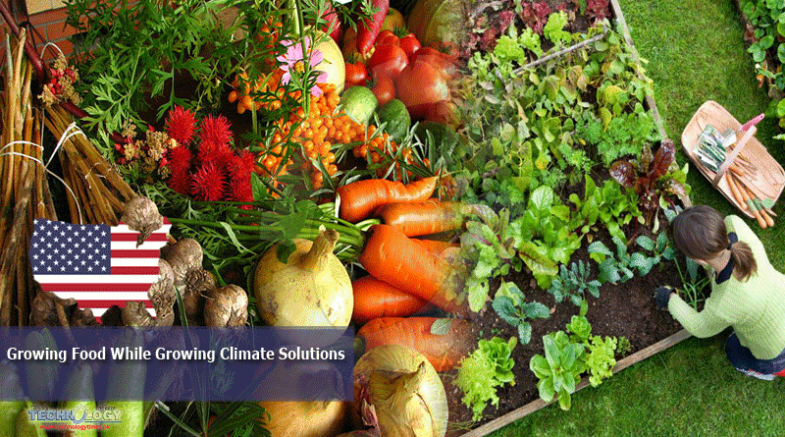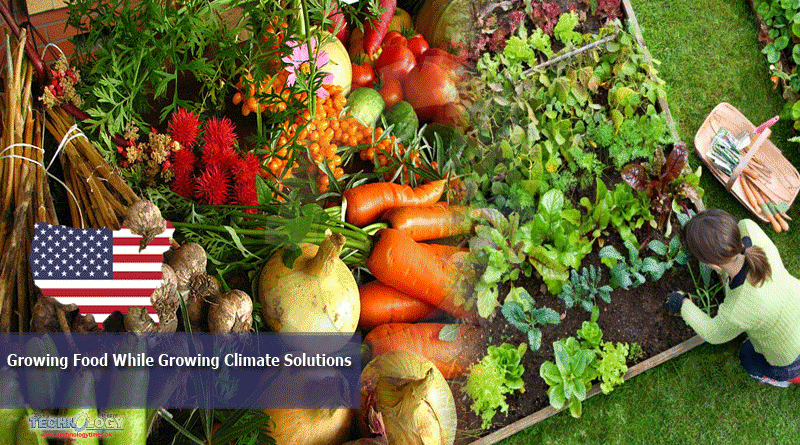In the early days of the COVID-19 pandemic, uncertainty was everywhere. Pretty quickly, that uncertainty showed up at the grocery store, Climate Solutions

Climate Solutions, I remember seeing partially empty shelves as people panicked and stocked up on food. Eggs became as scarce as hens’ teeth.
Today, plenty of uncertainty remains, but our grocery store shelves are full again. America’s food supply chain has proven to be strong and resilient, thanks to American farmers and ranchers, including those here in Nevada.
Agriculture is Essential for Rural Communities
Agriculture is a significant contributor to the rural Nevada economy. According to the 2017 USDA Census of Agriculture, there are 3423 farms in Nevada with total revenue of $666m. Most farms (77%) are family owned. For generations, ranching has dominated the industry. Nevada farmers responded by growing a lot of hay, making it the top crop sold in the state. Dairy is another important sector. Although Nevada is a small milk-producing state, the dairies supply enough milk for the entire state.
Climate Solutions, Most ranchers and farmers rely on middlemen to get their products to market. Ranchers work with feedlots, slaughterhouses, and meat processing plants to turn their hard work into income. When those middlemen are local, ranchers don’t have to haul their herds long distances, which reduces their cost to bring products to market. There are only two slaughterhouses in Nevada, plus a proposed facility in Carson Valley.
Agriculture jobs have an economic ripple effect when people go into town to get groceries, gas, or a haircut. Before COVID-19, chances are they also met up with friends at their favorite watering hole, dropped a few coins into a slot machine or went to see a movie. All that spending contributes to a thriving local economy.
And let’s not forget the local food movement! Especially in the wake of the pandemic, more people are talking about food independence and the importance of local food sources. Sustainable agriculture and organic farming are vital parts of the movement. In Reno, Flint Street Farm used to be a parking lot but now grows and distributes produce to families that are food insecure. Climate Solutions, A growing number of farmers supply local restaurants or sell at local farmers markets. When Nevadans buy locally grown food, they are supporting the local economy.
Agriculture is Essential to Reducing Global Warming
Agriculture does much more than feed us and contribute to rural economies. It also plays an important role in reducing greenhouse gasses in the atmosphere. Agriculture and forestry contribute an estimated 10.5% of U.S. greenhouse gas emissions, according to the USDA. Some land use practices release carbon into the atmosphere while others sequester carbon. You probably already know that trees absorb carbon from the atmosphere. Did you know that when farmers rotate crops and use little to no pesticides, herbicides, or industrial fertilizers they are also sequestering carbon? Sustainable agriculture is part of the solution in the fight against global warming.
That includes ranchers, according to a growing body of research. Multi-paddock (MP) grazing is a system that uses small paddocks to keep grazers in a tight herd. Grazing periods are very short, so that pastures aren’t cut down to the ground. Before that happens, grazers are moved on to the next paddock. By giving each paddock a long recovery period in between grazing, pastures recover more completely. MP grazing allows ranchers to stock more cattle than has been considered sustainable by those using other systems. Active management, reacting to current conditions by changing the plan, is key to success. If it hasn’t rained in a while, ranchers may need to move grazers to the next paddock sooner to avoid overgrazing. This highlights another critical element—the need to build in a buffer. Ranchers who have practiced MP grazing for decades say they’ve been profitable while restoring rangelands. Along the Nevada-California border, The Springs Ranch in Fort Bidwell, California, is a demonstration center for sustainable livestock management practices, including MP grazing.
Climate Solutions Ranchers and farmers face many challenges. Climate change, with its unpredictable rainfall, rising heat, and stronger extreme weather events, brings another level of uncertainty. It’s time for Congress to enact legislation that will combat climate change and give farmers and ranchers more support.
Growing Climate Solutions Act
Encouragingly, a bipartisan group of senators and representatives have introduced the Growing Climate Solutions Act. This legislation provides the incentive for farmers, ranchers, and foresters to engage in sustainable practices by helping them to access existing lucrative carbon credit markets. Basically, it will be easier for them to get paid for emissions they reduce and carbon they sequester. The bill gives them technical assistance to develop practices that are eligible for carbon credits, measures the value of those credits, and certifies them for trading on the market. This is good news for everyone.
Here in Nevada, climate change is already affecting our farmers and ranchers through moderate to extreme drought. More water is evaporating out of the soil, putting more stress on crops and rangeland vegetation. For farmers, the need to increase irrigation means costs go up. For ranchers, stressed rangeland vegetation means running smaller herds and earning less revenue, or running the risk of overgrazing. The Growing Climate Solutions Act would help farmers and ranchers combat these concerning trends and reap a financial benefit while they do so.
The Growing Climate Solutions Act has been introduced in both the House (H.R. 7393) and the Senate (S.3894). The bill is supported by more than 50 businesses, farm groups and environmental organizations. I hope Rep. Mark Amodei, Sen. Jacky Rosen and Sen. Catherine Cortez Masto will support the bill as well.
In July, the Senate Agriculture Committee held a hearing on this legislation. Sen. Debbie Stabenow, the ranking member on the committee and a cosponsor of the Growing Climate Solutions Act said, “While farmers are uniquely affected by the climate crisis, they are also a critically important part of the solution.”
I couldn’t agree more. Even as farmers and ranchers need support to navigate our changing climate, they have huge potential to help prevent the worst of the possible changes by using sustainable agricultural methods. Congress should continue to work together to pass bipartisan legislation that values farmers’ and ranchers’ contributions to feeding America and solving the challenge of climate change. Let’s tell Congress to take action on the Growing Climate Solutions Act today!
This news was originally published at sierranevadaally.org
